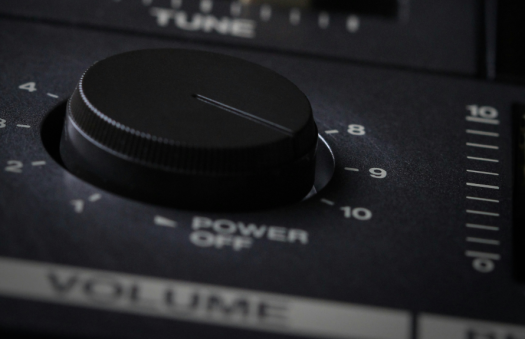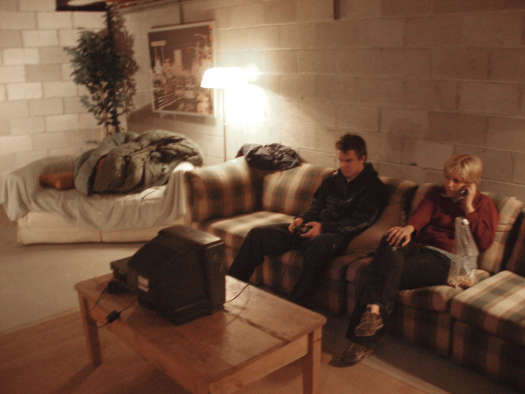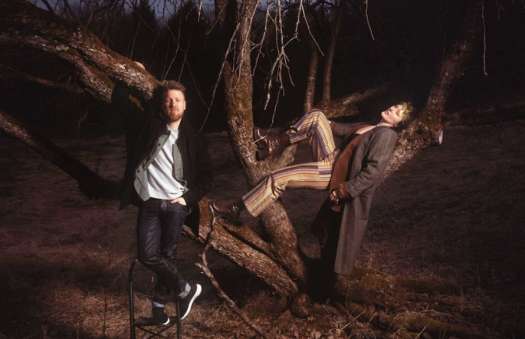Arguably, the transistor radio started it all. Prior to 1953, consumer radio sets contained giant, power-guzzling vacuum tubes; the only practical place to put a radio set was on the living room floor. With the introduction of portable transistor sets, you could take your radio along to a picnic provided you had a darn big picnic basket, early transistor sets being about the size of a miners lunchbox. Transistor radios birthed an explosion of radio stations while teenaged baby boomers were building a rock and roll nation at the top of the charts. Billboard stars were born in a blaze, fizzled and died in the same week. It was the Big Bang of radio broadcasting.
Meanwhile, a lonely wind blew down the Canadian Shield and across the prairies. Canadian songwriters and musicians were now doubly isolated: first, by virtue of living in a vast frozen wasteland whose thin population couldnt support an indigenous radio revolution; and second, by the growth of the American music business, which roved Godzilla-like across the land, crushing station managers and Canadian play lists in its path. By the 1960s, it was obvious to anyone with a dream that the only way to get heard was on American radio. The Canadian system was simply helpless, helpless, he-e-elpless.
Or was it? Canada had begun to venture down the road of cultural protectionism in 1958, when the Fowler Commission recommended rules stating that Canadian television broadcasters (including the CBC) must offer 45 percent Canadian content. In 1971, in response to lobbying from Canadian musicians and supporters of Canadian culture, the Canadian Radio-television and Telecommunications Commission (CRTC, mandated by federal law to regulate Canadian airwaves) brought down regulations requiring radio stations to play a minimum of Canadian content on their stations as a condition of licence. The decision was controversial, for sure.
Supporters argued that affirmative action was the best way to give Canadian music a chance, whereas many broadcasters felt the quality of Canadian music was, lets say, less than competitive. And it wasnt just that Canadians wrote crappy songs: the industry-wide problem was that there wasnt an industry.
"The main problem was, for much of the late 60s and 70s, you could listen to the radio and you knew what a Canadian song was just by the sound of it it lacked in quality in all parts, says Tom Tompkins, a radio programming veteran who began his career in 1969. "Production elements were lacking. There werent a lot of studios and producers in Canada at the time who were qualified. And the songwriting was inferior. The badness in the booth caused Canadian DJs much as they wanted to support Canadian music many a dark night of the soul. "Wed go into a music meeting and wed go through the stuff that was international, stuff that charted on Billboard. Wed add two or three a week, and then wed hit the CanCon pile holy shit, we used to dread it.
The initial result of the new quota was that a lot of so-so stuff the best of a bad lot ended up at the top of the Canadian charts. "Im sure we made Anne Murray the dirge of Canadian households, jokes Tompkins. But eventually, the Canadian music industry doubtless in part encouraged by the fact that CanCon regs at least ensured an audience for their product caught up to international standards. By the mid-80s, Canadian production facilities, producers, songwriters and musicians had shown they could compete at least in terms of technical competence. Luckily, there was a lot of talent there too. That being so, does the case for CanCon quotas still hold?
"Sometimes youve got a plethora of good CanCon and other times youve got nothing, says Tompkins, whos now in country music, a genre in which Canadians tend to shine. "Theres a certain percentage of CanCon thats as good as anything in the world. You wouldnt know it was Canadian if someone didnt tell you. Most Americans dont know Shania Twain is Canadian.
The CRTC reviewed the regulations in 1998 and decided to increase CanCon quotas for popular music from 30 percent to 35 percent. In December 2006, the CRTC again reviewed its mandated quotas. Various pro-CanCon organizations including Indie Pool, the Canadian Independent Recording Artists Association, the Songwriters Association of Canada, and the Canadian Music Publishers Association submitted proposals to increase the minimum quotas. The range of proposed increases ran from 40 percent to 55 percent. They also proposed the introduction of quotas with bonus points for playing emerging artists. Across the table, the Canadian Association of Broadcasters argued primarily that increasing the CanCon quotas would drive listeners away from traditional radio toward new technologies like the internet and satellite radio.
In the end, the CRTC ruled to maintain the quotas for popular music at 35 percent, while increasing quotas for classical, jazz and blues. It made a soft statement on new music by emerging artists by requiring "applicants for new licences, licence renewals and transfers of ownership or control of radio stations to make specific commitments to provide airplay for and to promote emerging Canadian artists and their music, following which the CRTC would, you know, think about it.
Music-side lobbyists are unhappy. "When you grow up here youre inundated by American media, so its important to make sure that the airwaves are open to new Canadian stuff, says Jacksoul front-man Haydain Neale, current president of the Songwriters Association of Canada. "The Canadian music industry is being redefined almost daily with P2P and other issues. It continues to be important, as its base, to say that Canadians believe in Canadian music. I havent seen anyone establish themselves or be able to buy a house yet, just from the new technologies. So its important for me as an established guy to keep an eye that theres a way [for new music] to be heard.
On that, musicians and broadcasters agree: the profusion of new technologies, compounded by the CRTCs hands-off attitude toward their regulation, are what bring the adequacy and efficacy of Canadian content regulation into sharp focus. "Over the past five years, most new radio licences apply for 40 percent CanCon, says Tompkins. "Broadcasters were afraid the increase was going to 50 percent, but luckily for Canadian broadcasters, if it werent for internet and various forms of competition to traditional radio, Im sure the quota would have been raised to 45 or 50 percent. Forty percent is much more reasonable.
Meanwhile, a lonely wind blew down the Canadian Shield and across the prairies. Canadian songwriters and musicians were now doubly isolated: first, by virtue of living in a vast frozen wasteland whose thin population couldnt support an indigenous radio revolution; and second, by the growth of the American music business, which roved Godzilla-like across the land, crushing station managers and Canadian play lists in its path. By the 1960s, it was obvious to anyone with a dream that the only way to get heard was on American radio. The Canadian system was simply helpless, helpless, he-e-elpless.
Or was it? Canada had begun to venture down the road of cultural protectionism in 1958, when the Fowler Commission recommended rules stating that Canadian television broadcasters (including the CBC) must offer 45 percent Canadian content. In 1971, in response to lobbying from Canadian musicians and supporters of Canadian culture, the Canadian Radio-television and Telecommunications Commission (CRTC, mandated by federal law to regulate Canadian airwaves) brought down regulations requiring radio stations to play a minimum of Canadian content on their stations as a condition of licence. The decision was controversial, for sure.
Supporters argued that affirmative action was the best way to give Canadian music a chance, whereas many broadcasters felt the quality of Canadian music was, lets say, less than competitive. And it wasnt just that Canadians wrote crappy songs: the industry-wide problem was that there wasnt an industry.
"The main problem was, for much of the late 60s and 70s, you could listen to the radio and you knew what a Canadian song was just by the sound of it it lacked in quality in all parts, says Tom Tompkins, a radio programming veteran who began his career in 1969. "Production elements were lacking. There werent a lot of studios and producers in Canada at the time who were qualified. And the songwriting was inferior. The badness in the booth caused Canadian DJs much as they wanted to support Canadian music many a dark night of the soul. "Wed go into a music meeting and wed go through the stuff that was international, stuff that charted on Billboard. Wed add two or three a week, and then wed hit the CanCon pile holy shit, we used to dread it.
The initial result of the new quota was that a lot of so-so stuff the best of a bad lot ended up at the top of the Canadian charts. "Im sure we made Anne Murray the dirge of Canadian households, jokes Tompkins. But eventually, the Canadian music industry doubtless in part encouraged by the fact that CanCon regs at least ensured an audience for their product caught up to international standards. By the mid-80s, Canadian production facilities, producers, songwriters and musicians had shown they could compete at least in terms of technical competence. Luckily, there was a lot of talent there too. That being so, does the case for CanCon quotas still hold?
"Sometimes youve got a plethora of good CanCon and other times youve got nothing, says Tompkins, whos now in country music, a genre in which Canadians tend to shine. "Theres a certain percentage of CanCon thats as good as anything in the world. You wouldnt know it was Canadian if someone didnt tell you. Most Americans dont know Shania Twain is Canadian.
The CRTC reviewed the regulations in 1998 and decided to increase CanCon quotas for popular music from 30 percent to 35 percent. In December 2006, the CRTC again reviewed its mandated quotas. Various pro-CanCon organizations including Indie Pool, the Canadian Independent Recording Artists Association, the Songwriters Association of Canada, and the Canadian Music Publishers Association submitted proposals to increase the minimum quotas. The range of proposed increases ran from 40 percent to 55 percent. They also proposed the introduction of quotas with bonus points for playing emerging artists. Across the table, the Canadian Association of Broadcasters argued primarily that increasing the CanCon quotas would drive listeners away from traditional radio toward new technologies like the internet and satellite radio.
In the end, the CRTC ruled to maintain the quotas for popular music at 35 percent, while increasing quotas for classical, jazz and blues. It made a soft statement on new music by emerging artists by requiring "applicants for new licences, licence renewals and transfers of ownership or control of radio stations to make specific commitments to provide airplay for and to promote emerging Canadian artists and their music, following which the CRTC would, you know, think about it.
Music-side lobbyists are unhappy. "When you grow up here youre inundated by American media, so its important to make sure that the airwaves are open to new Canadian stuff, says Jacksoul front-man Haydain Neale, current president of the Songwriters Association of Canada. "The Canadian music industry is being redefined almost daily with P2P and other issues. It continues to be important, as its base, to say that Canadians believe in Canadian music. I havent seen anyone establish themselves or be able to buy a house yet, just from the new technologies. So its important for me as an established guy to keep an eye that theres a way [for new music] to be heard.
On that, musicians and broadcasters agree: the profusion of new technologies, compounded by the CRTCs hands-off attitude toward their regulation, are what bring the adequacy and efficacy of Canadian content regulation into sharp focus. "Over the past five years, most new radio licences apply for 40 percent CanCon, says Tompkins. "Broadcasters were afraid the increase was going to 50 percent, but luckily for Canadian broadcasters, if it werent for internet and various forms of competition to traditional radio, Im sure the quota would have been raised to 45 or 50 percent. Forty percent is much more reasonable.




